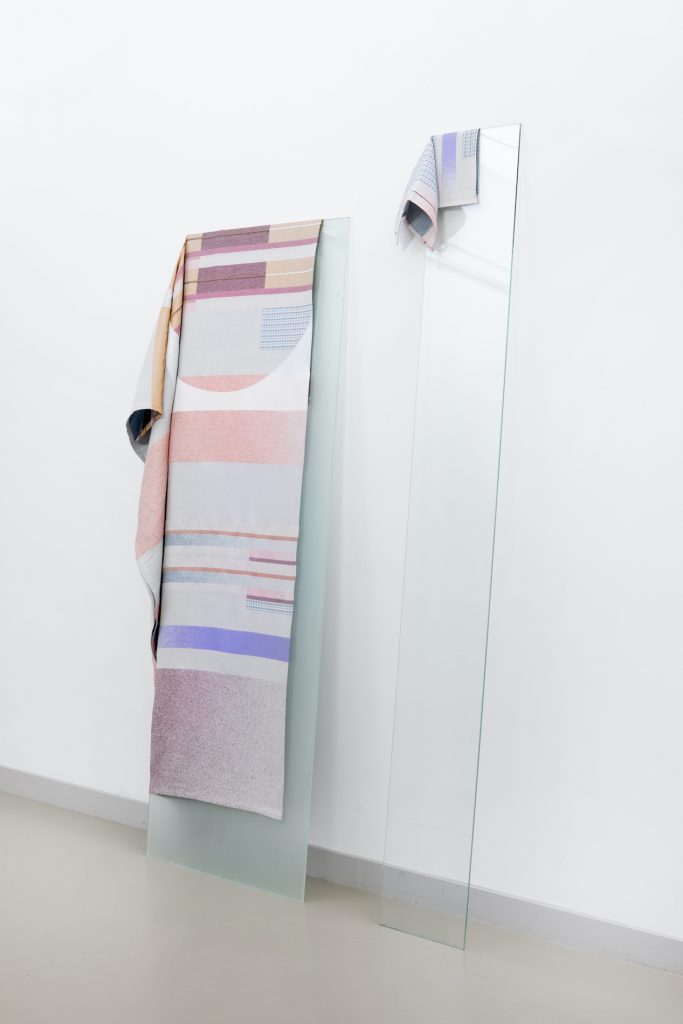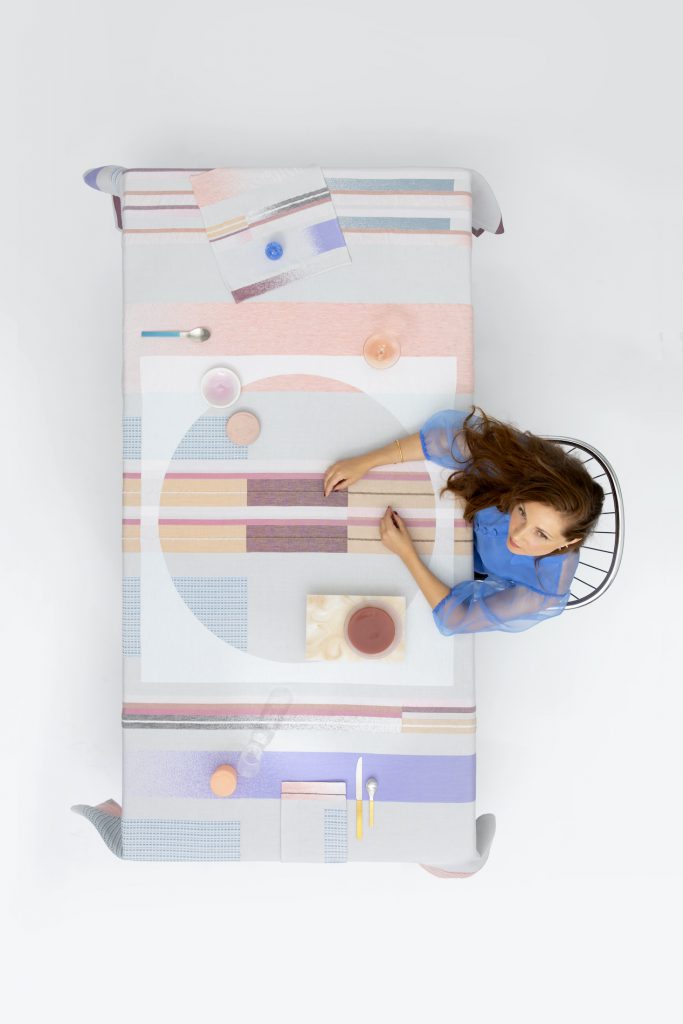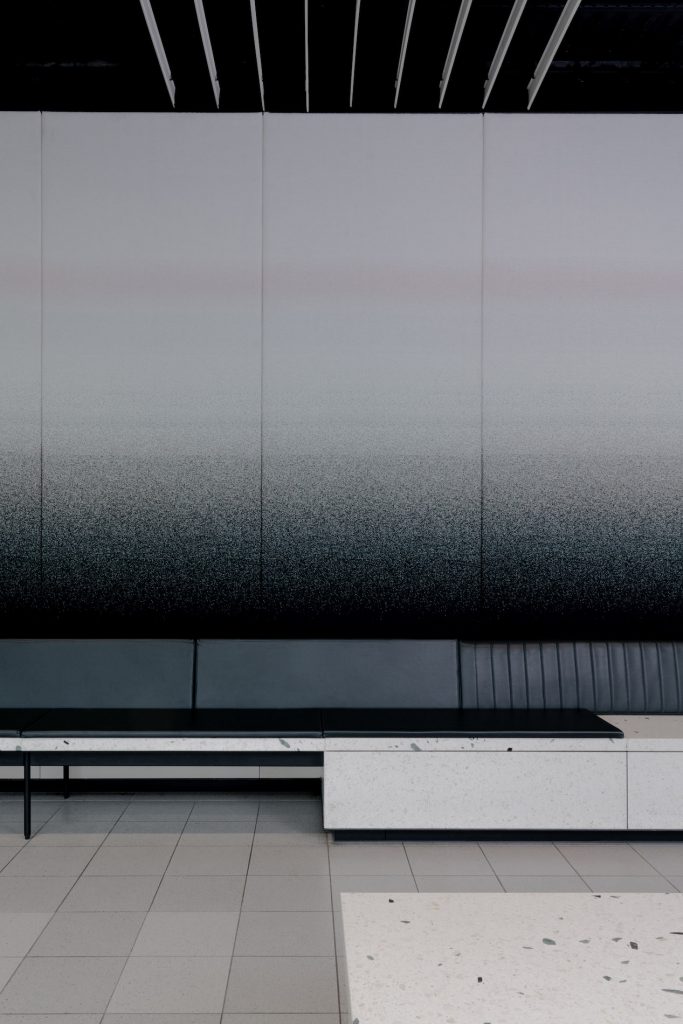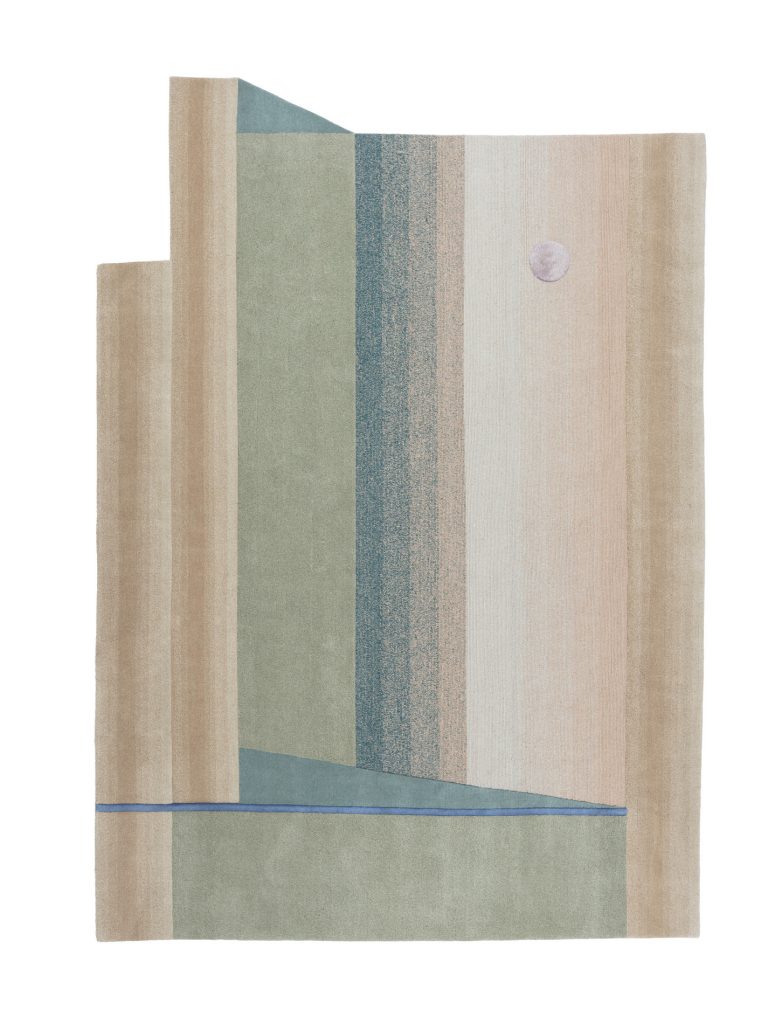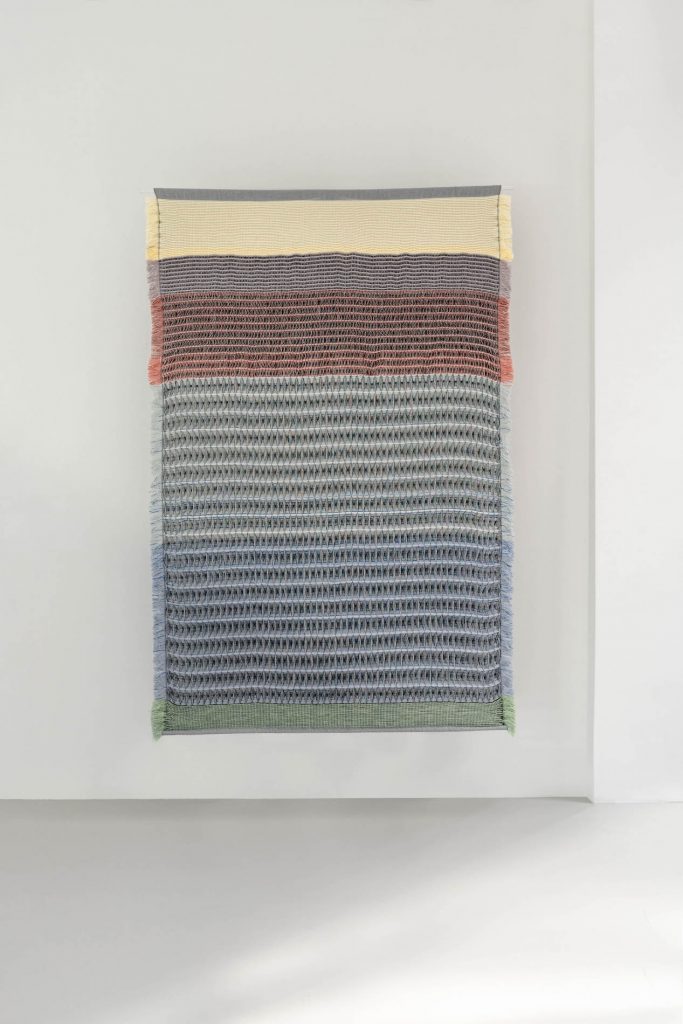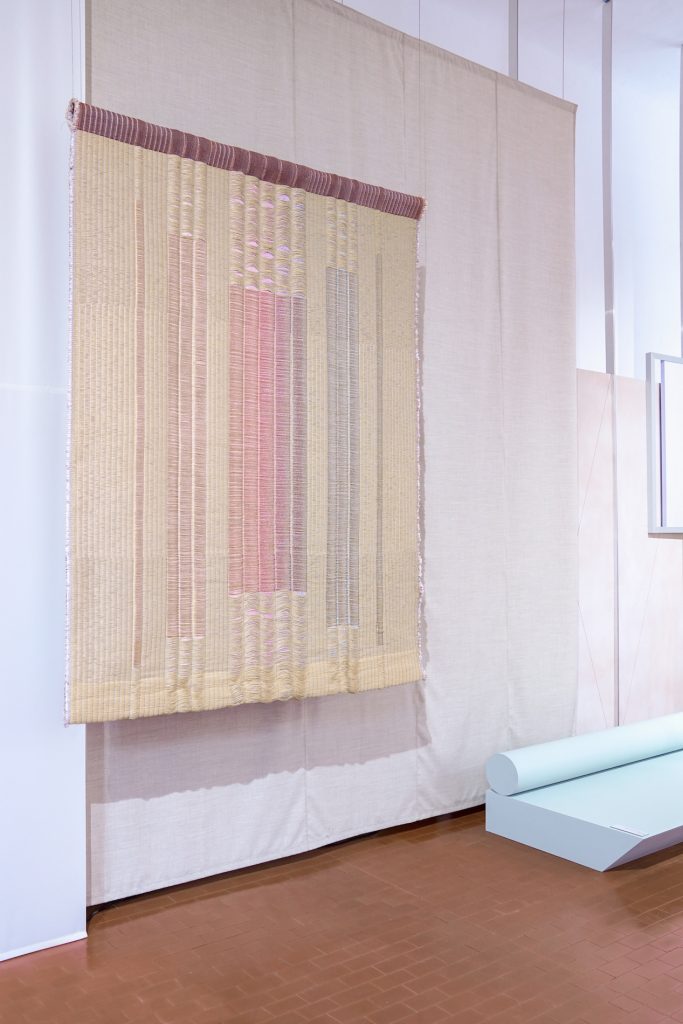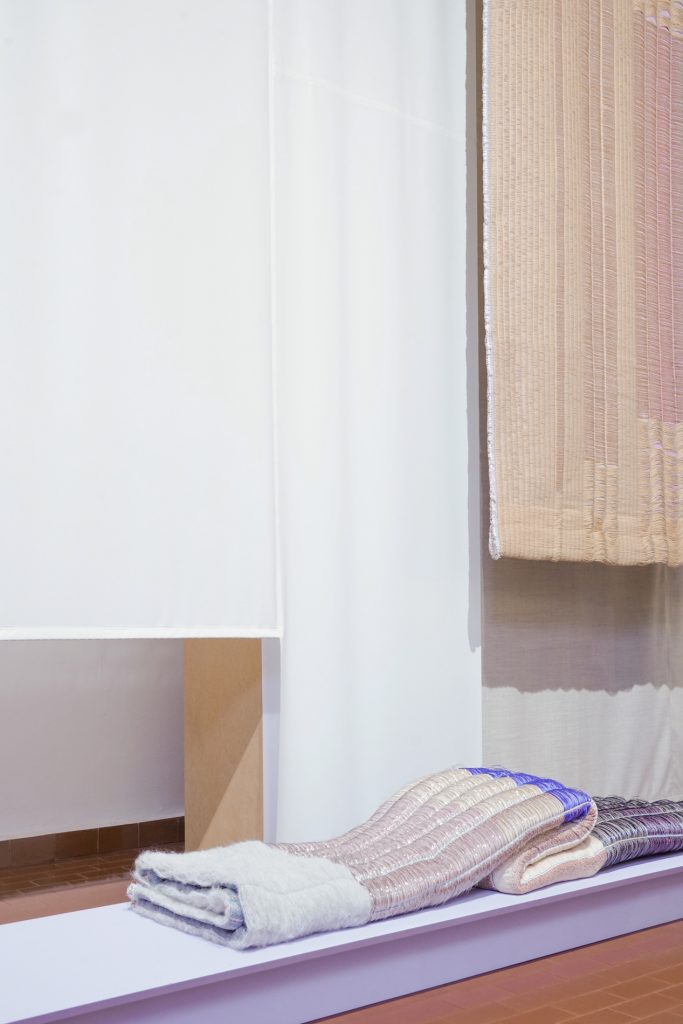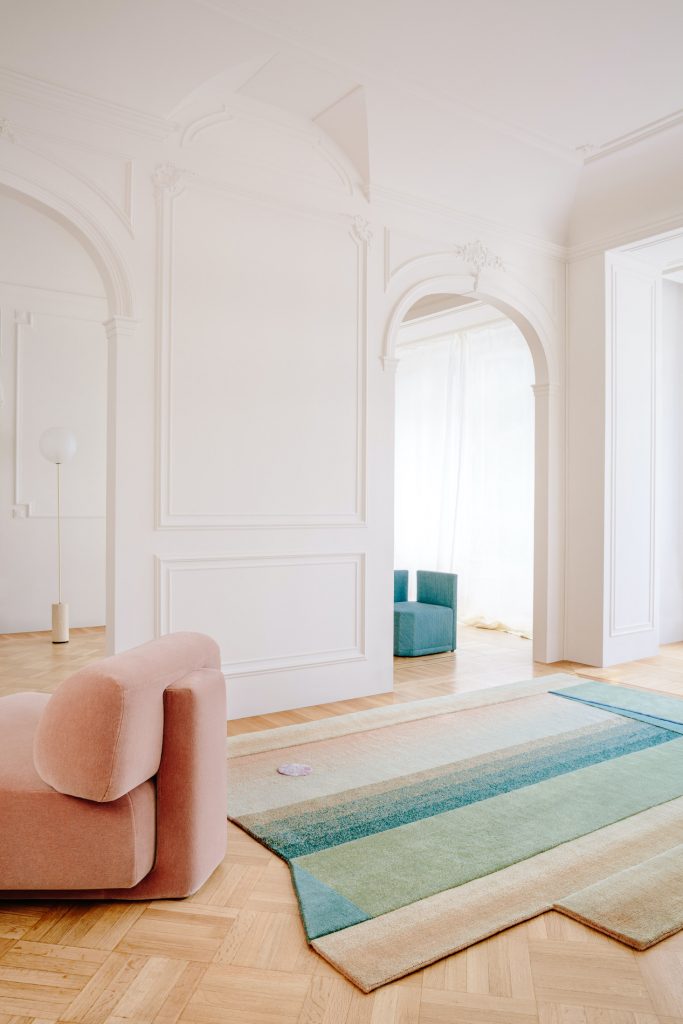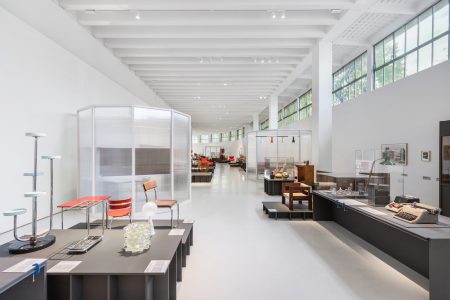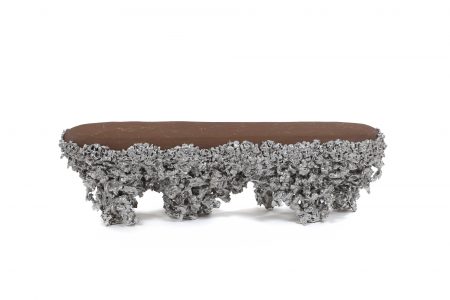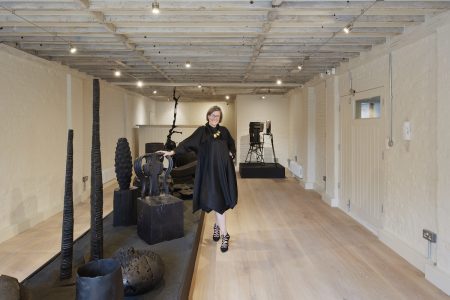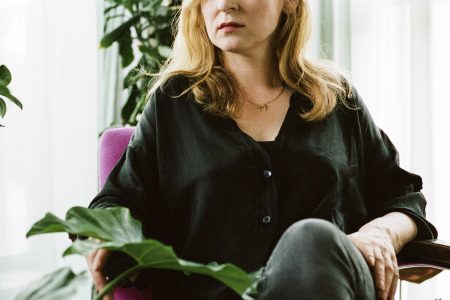Mae Engelgeer: Textile Dreamworlds
TLmag sat down with Amsterdam-based designer Mae Engelgeer to discuss her practice which is distinguished by elegant softness and strategic harshness.
With a distinctive style, which brings together signature colors and graphic patterns, the Amsterdam-based textile designer Mae Engelgeer has been working at the eponymous studio founded in 2014. In addition to creating her own collections, Engelgeer has worked with brands around the world in exploring where the boundaries of textile design can be pushed. TLmag sat down with Engelgeer to discuss her background and practice. What we found was a dreamworld, disrupted by elegant and strategic harshness
TLmag: How do you refer to your practice? Do you refer to it as an interior designer, textile designer?
Mae Engelgeer (M.E.): My background and practice is in textiles, it always feels important to point that out. I have a lot of love for the materiality and the softness of textile. I also often get asked to work on textiles specifically. I also do other projects, for example around interior design, but I would rather say that I work on projects with interior design as a component to it. It actually is the combining of these different practices and materials that form my signature, even if it is just by making choices using yarns or colors or graphics. I found that people recognize that as my work. But still, I think it’s important to keep the focus on textile.
TLmag: And, when you’re starting your project, how do you approach it? Where does the creative process start for you?
M.E.: I always have a few ideas or a sort of atmosphere in mind. When I’m translating these into materials, graphics, or colors, the process starts. In that sense I feel like I’m always in a sort of flow from one project to the next, my work is always evolving. Coming from a fashion background I’ve learned to work for a client, however, people often ask me for my ideas and often give me a lot of freedom. In the end, I always feel like that works best for me. Of course, that is also how I started, by doing my own collections.
The other day I got a question about whether I keep my target audience in mind, but actually, I don’t. I think I’m my own client in a way. I like to create what feels good to me, if I work in that way I know I’ll be satisfied with the finished product. If there are limitations to a project it’s really about finding the right balance. Where do I have to give in a little bit without losing what I want to show and what I want to create? And then I can place it into a project and decide what it will be… I collect all kinds of materials at the studio on a table to work on a bunch of different, new projects. From time to time I walk by and adjust a bit, and projects grow over time.
TLmag: As I’m looking at your projects, textiles seem to be quite central in your projects. And so I was wondering if you could maybe elaborate on your love for textiles?
M.E.: I already had a textile course in middle school and that really triggered me. Afterward, the next logical step for me was AMFI where I knew I could specialize in textiles. I liked the fashion world but I wasn’t interested in the shapes, my interest was more in the materiality. When I continued my education at the Sandberg Institute I really got to dive into the discipline, the world of textiles. The materiality was always what had attracted me to textiles in the first place: what’s the material? Or what can we use? What’s the technique?
And after that, it was more about finding out what you can do with textiles. If it isn’t fashion, what is it then? Of course, the Sandberg Institute positions itself between design and art so actually, just from there, I started working on this intersection.In the end, I think it’s the tactility of the material which has always attracted and still attracts me, to textiles. In that sense tactility is always a really important element, the soft side which is combined with hard edges.
TLmag: I was wondering if you could maybe elaborate a little bit on the usage of contrasts in your work, and why you see it as important?
M.E.: To only focus on softness does not fit my personality, there should always be something surprising. My work often consists of four elements that have to balance each other out: the color, the material, the graphic, and the technique. I do love pastel colors, but they need to be contrasted with something quite harsh. Because of my background in fashion I also often think in collections, I create multiple designs of one project in different color variations. I’m not sure if I ever made only one of something, it’s always like a sort of family.
